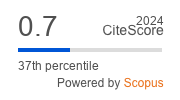Symptoms profile of patients with major depression in Baghdad
Abstract
:Background: Many studies had stated that there are marked variations in the clinical presentation of depressive states between different cultures.Objectives: The main aim of the study is to identify the symptoms profile of patients with major depressive disorder living in Baghdad.Method: Ninety two patients with major depressive disorder consulting Ibn-Rushd psychiatric teaching hospital were studied thoroughly to identify the frequency of symptoms among them. The fifth edition of the Arabic version of the Mini-International Neuropsychiatric Interview (M.I.N.I) was used to identify the Diagnostic and Statistical Manual – fourth edition (DSM-IV) symptoms. A list of other symptoms, which were found to present variably in depression according to culture, was gathered from previous studies and modified was included to calculate their frequency and to compare them to the DSM-IV symptoms.Results: All the 9 DSM-IV symptoms were more common than all the other symptoms. The DSM-IV symptoms did not differ significantly according to sociodemographic variables.Regarding the other symptoms: “Numbness or crawlingsensation”, “sex and libido”and “crying “symptoms were allsignificantly more common in females than in males; “Sex and libido” symptoms differ significantly according to themarital status and to education; &“Hypochondriasis” was significantly more common in elderly group Patients with major depressive disorder with psychotic features were presented with less auditory hallucinations and more visual hallucinations as compared to studies in western societies.Conclusion: The presentation of depression in patients from Baghdad is not different from patients around the world, and the DSM-IV symptoms are the most common symptoms in patients with major depressive disorder from Baghdad.Background: Many studies had stated that there are marked variations in the clinical presentation of depressive states between different cultures.Objectives: The main aim of the study is to identify the symptoms profile of patients with major depressive disorder living in Baghdad.Method: Ninety two patients with major depressive disorder consulting Ibn-Rushd psychiatric teaching hospital were studied thoroughly to identify the frequency of symptoms among them. The fifth edition of the Arabic version of the Mini-International Neuropsychiatric Interview (M.I.N.I) was used to identify the Diagnostic and Statistical Manual – fourth edition (DSM-IV) symptoms. A list of other symptoms, which were found to present variably in depression according to culture, was gathered from previous studies and modified was included to calculate their frequency and to compare them to the DSM-IV symptoms.Results: All the 9 DSM-IV symptoms were more common than all the other symptoms. The DSM-IV symptoms did not differ significantly according to sociodemographic variables.Regarding the other symptoms: “Numbness or crawlingsensation”, “sex and libido”and “crying “symptoms were allsignificantly more common in females than in males; “Sex and libido” symptoms differ significantly according to themarital status and to education; &“Hypochondriasis” was significantly more common in elderly group Patients with major depressive disorder with psychotic features were presented with less auditory hallucinations and more visual hallucinations as compared to studies in western societies.Conclusion: The presentation of depression in patients from Baghdad is not different from patients around the world, and the DSM-IV symptoms are the most common symptoms in patients with major depressive disorder from Baghdad.













